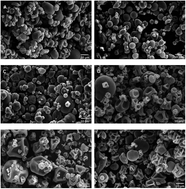The stability and bioaccessibility of fucoxanthin in spray-dried microcapsules based on various biopolymers
Abstract
Fucoxanthin is a major marine carotenoid with many biological activities. It is well known that fucoxanthin is unstable to heat and acid due to its polyunsaturated structure. Another defect of fucoxanthin is the low bioavailability and all these drawbacks make it limited in the food industry. In order to improve its stability and intestinal absorption, fucoxanthin was encapsulated with biopolymers by spray drying in this study. All the microspheres we prepared had a spherical shape with encapsulation efficiencies (EE) ranging from 86.48% to 97.06%. A heat stability test showed that maltodextrin (MD), gum arabic (GA) and whey protein isolate (WPI) improved the thermal stability of fucoxanthin. The degradation kinetics of the loaded fucoxanthin encapsulated with biopolymers also indicated that GA and MD had a better protective effect on fucoxanthin. The encapsulated fucoxanthin degradation rate within MD, GA, WPI and gelatin (GEL) followed second-order kinetics and their half-life (t1/2) was 92.6 d, 99.8 d, 50.9 d and 69.3 d, respectively. The simulated digestion test in vitro suggested that MD, GA and WPI effectively protected fucoxanthin in the gastric acid environment, meanwhile increasing the release rate of fucoxanthin in the intestinal tract.

- This article is part of the themed collection: Editors' collection: Food Engineering, Science, Technology, and Nutrition


 Please wait while we load your content...
Please wait while we load your content...